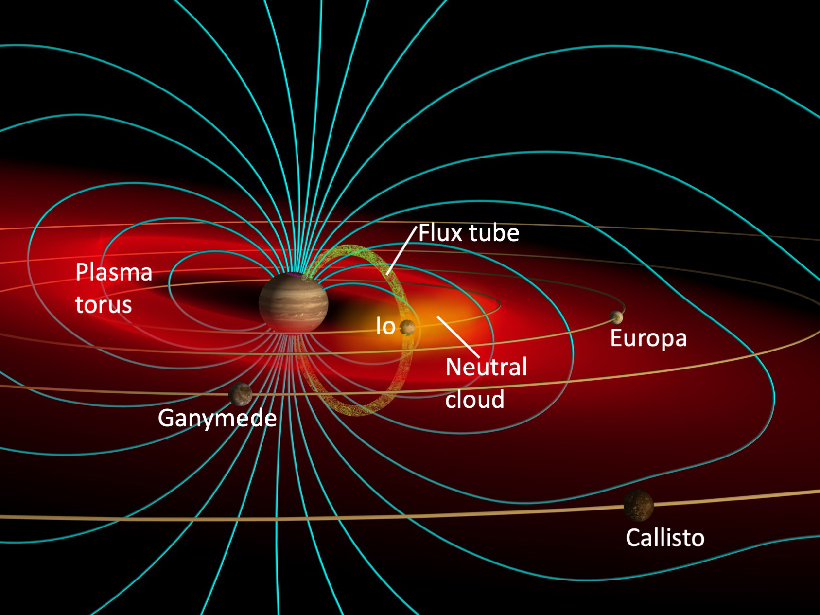Source: Journal of Geophysical Research: Space Physics
Jupiter’s two innermost moons, Io and Europa, play a central role in sculpting and interacting with the planet’s magnetosphere—the vast region where Jupiter’s magnetic field influences a swirling mass of charged particles surrounding the planet and its many moons.
In a new review, Bagenal and Dols pull together decades of research on this intricate system. While prior reviews have focused on either Io’s or Europa’s space environment alone, this paper addresses both in harmony. It draws on data from the early Voyager missions, later flybys by other spacecraft, the latest Earth-based observations, innovative computational modeling efforts, and more.
The researchers paint a detailed picture of what is known about the two moons’ individual atmospheres. While Io’s is thought to consist mostly of sulfur dioxide, Europa’s is mostly oxygen. Each moon’s atmosphere interacts with the magnetosphere’s charged particles, known as plasma, causing clouds of neutral atoms to escape from the atmospheres.
In turn, these neutral clouds serve as the primary source of new plasma in Jupiter’s magnetosphere: Existing plasma electrons ionize neutral atoms, transforming them into charged plasma particles.
Io plays a particularly intriguing role in this system. At any given moment, 50–100 of its many volcanoes are actively erupting, emitting sulfur dioxide into the moon’s atmosphere. Every second, roughly a ton of this gas becomes plasma that feeds an ever present doughnut-shaped belt, or torus, of dense plasma that encircles Jupiter.
While many details of these physical processes have become clear in recent years, questions remain. For instance, what are the precise compositions of the moons’ atmospheres? How do plasma–atmosphere interactions vary at different locations around each moon? And what impact do changes in Io’s volcanic activity have on the system?
The ongoing Juno mission, Earth-based observations, and computational modeling should continue to provide new insights into the Io–Europa–magnetosphere system. In the future, NASA’s Europa Clipper and the European Space Agency’s Jupiter Icy Moons Explorer (JUICE) missions promise to illuminate more about Europa, which is thought to harbor an intriguing liquid ocean under its icy crust. The authors note that a flyby mission to Io is needed to answer many questions about its unique role. (Journal of Geophysical Research: Space Physics, https://doi.org/10.1029/2019JA027485, 2020)
—Sarah Stanley, Science Writer
Citation:
Stanley, S. (2020), Two moons and a magnetosphere , Eos, 101, https://doi.org/10.1029/2020EO142836. Published on 21 April 2020.
Text © 2020. AGU. CC BY-NC-ND 3.0
Except where otherwise noted, images are subject to copyright. Any reuse without express permission from the copyright owner is prohibited.

